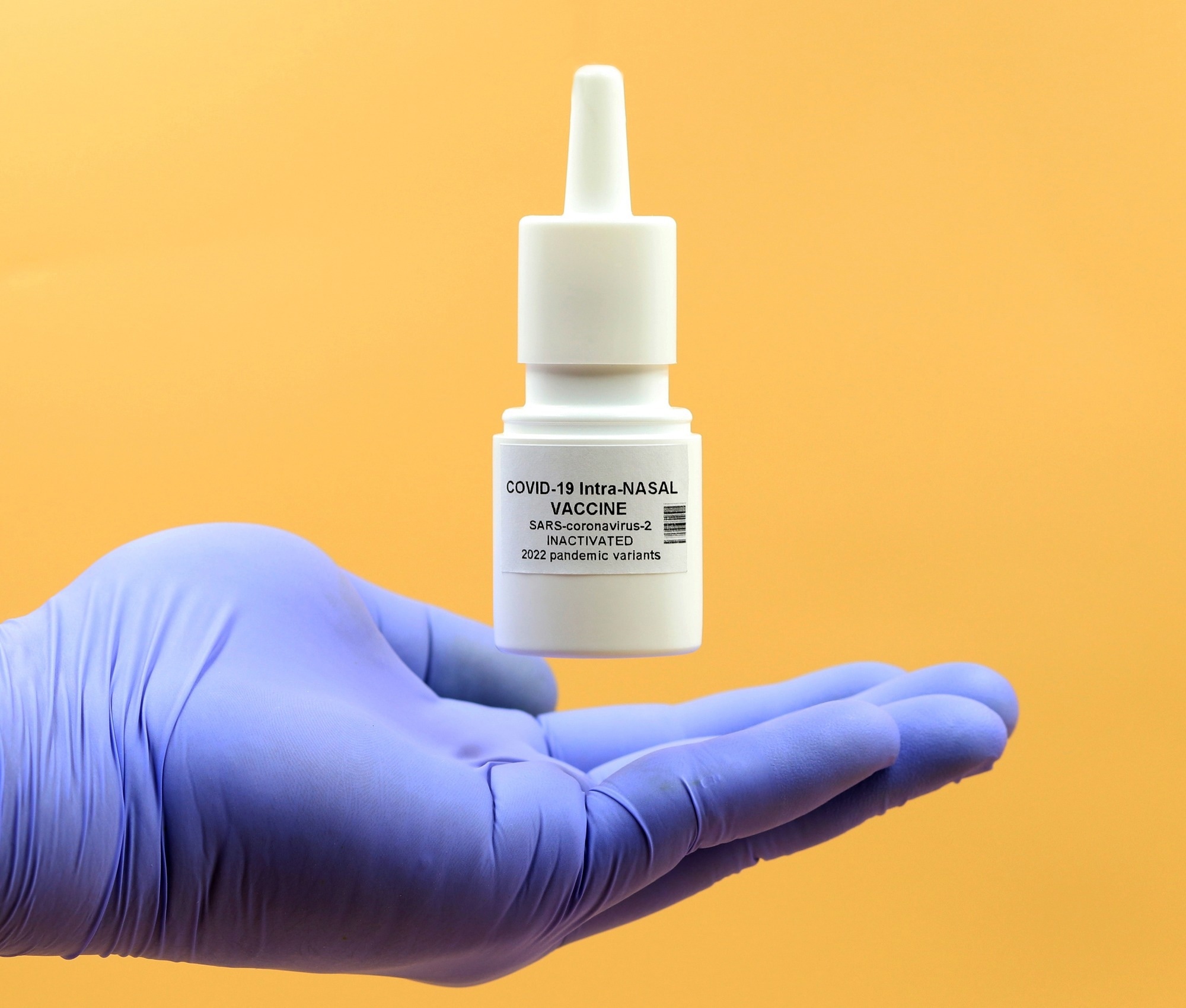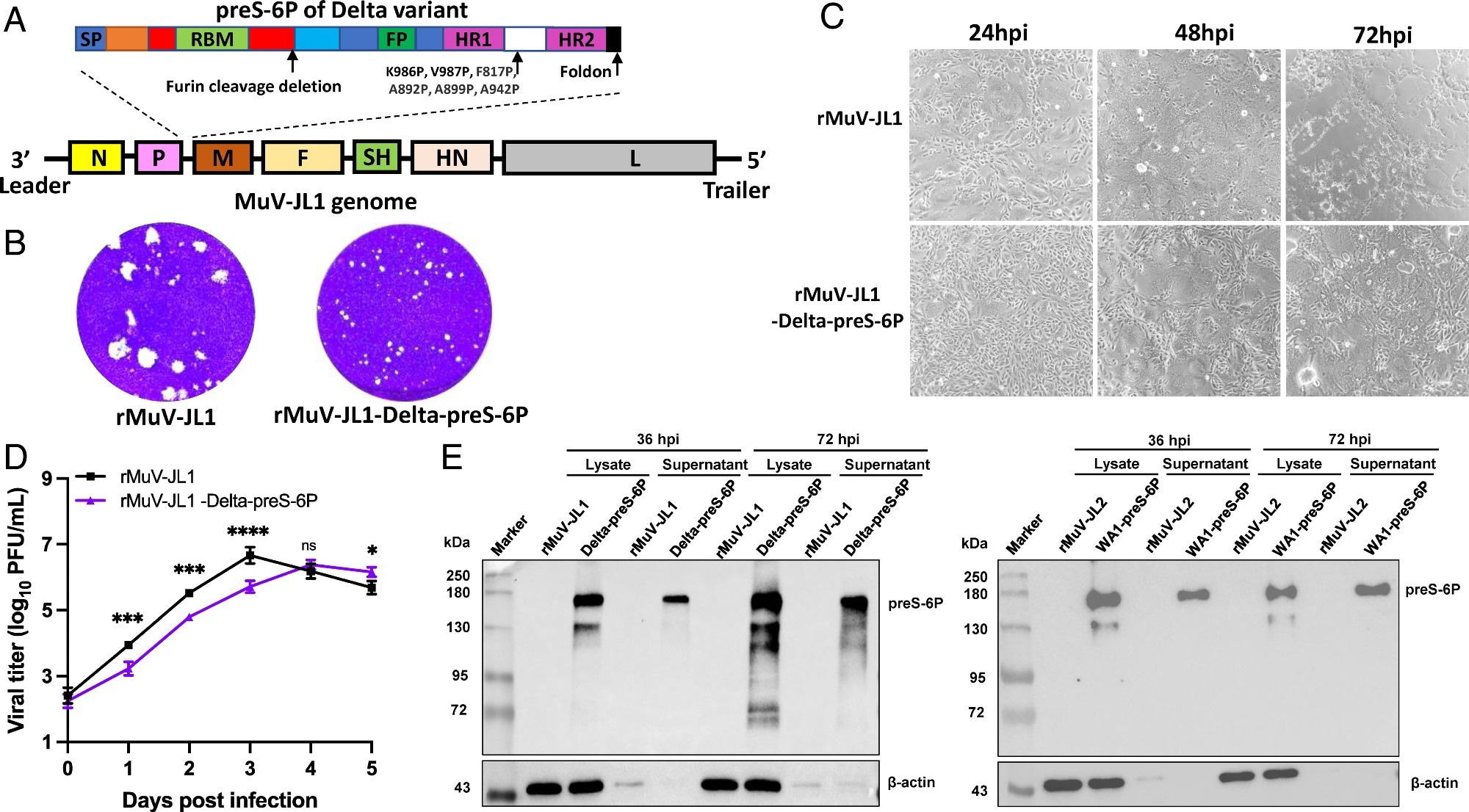Utilizing the established safety of the measles-mumps-rubella (MMR) vaccine platform, a team of researchers recently developed an intranasal measles-mumps-SARS-CoV-2 spike (S) protein (MMS) vaccine that provides broad, durable protection against major Severe Acute Respiratory Syndrome Coronavirus 2 (SARS-CoV-2) variants. Their study was published in the journal PNAS.
 Study: A next-generation intranasal trivalent MMS vaccine induces durable and broad protection against SARS-CoV-2 variants of concern. Image Credit: TopMicrobialStock / Shutterstock
Study: A next-generation intranasal trivalent MMS vaccine induces durable and broad protection against SARS-CoV-2 variants of concern. Image Credit: TopMicrobialStock / Shutterstock
Background
As of October 2023, the coronavirus disease 2019 (COVID-19) pandemic, which was caused by SARS-CoV-2, had resulted in over 6.96 million deaths and over 771 million infections worldwide. Despite the fact that a number of vaccines have been created employing the prefusion spike (S) protein as an immunogen, they are not mucosally immune, have a short half-life, and are less effective against SARS-CoV-2 variants that are constantly evolving. The effectiveness of the current vaccines is under threat due to the emergence of multiple variants, particularly the Omicron, which has multiple mutations. In light of this, the need for more potent vaccinations is urgent. More research is required to develop next-generation intranasal vaccines that offer broader mucosal immunity and are flexible enough to adapt to changing strains of SARS-CoV-2, considering the ongoing emergence of variants of the virus and the shortcomings of existing vaccines.
About the study
The study involved the thorough examination and creation of recombinant viruses that express the SARS-CoV-2 six prolines (preS-6P): recombinant Measles Virus (rMeV), recombinant Mumps Virus (rMuV-JL1), and recombinant Mumps Virus (rMuV-JL2). Growth curves, virus preparation, purification, and assay procedures were all put into practice. Among these tests are Western blotting, ribonucleic acid (RNA) extraction, reverse transcription polymerase chain reaction (RT-PCR), Measles Virus (MeV), Mumps Virus (MuV), and SARS-CoV-2 plaque tests. The animal studies were approved by the Institutional Laboratory Animal Care and Use Committee of Ohio State University, with protocol numbers 2020A00000053 and 2009A1060-R3. In animal experiments, golden Syrian hamsters and IFNAR1−/− mice were challenged and immunized.
Protein purification, T cell assays, flow cytometry, and Enzyme-Linked Immunosorbent Assay (ELISA) tests to identify particular SARS-CoV-2 Immunoglobulin G (IgG) and Immunoglobulin A (IgA) antibodies were covered in further study steps. The ability of SARS-CoV-2 to neutralize pseudotypes, as well as the measurement of SARS-CoV-2 concentration in animal tissues, were also investigated. Following the completion of histological examinations, statistical analysis was performed on all of the data.
Study results
It was discovered recently that compared to another variant, the preS stabilized with preS-6P elicited a greater neutralizing antibody response. Next, the SARS-CoV-2 Delta variant’s preS-6P gene was incorporated into a different genome. Similar to the Delta variant, this modified strain retained high levels of protein expression despite differences in growth and cellular effects. Similar results were obtained when a gene from the SARS-CoV-2 Omicron BA.1 was incorporated into the genome of a different vaccine.
 Recovery and characterization of rMuV-JL1-Delta-preS-6P expressing the six proline-stabilized prefusion spike of SARS-CoV-2 Delta variant. (A) Strategy for insertion of preS-6P of the Delta variant into the P and M gene junction in the MuV-JL1 genome. (B) The plaque morphology of rMuV-JL1 and rMuV-JL1-Delta-preS-6P in Vero CCL81 cells at day 5. (C) rMuV-JL1-Delta-preS-6P exhibits delayed syncytia formation in Vero CCL81 cells (MOI of 0.1). (D) Replication kinetics of recombinant viruses in Vero CCL81 cells at an MOI of 0.1. (E) Expression of preS-6P in rMuV-JL1-Delta-preS-6P (Left) or rMuV-JL2-WA1-preS-6P (Right)-infected Vero CCL81 cells. An MOI of 0.1 was used for infection, and 10 μL of cell lysate (from total 200 μL) and 10 μL (from total 1 mL) of supernatant were used for Western blot.
Recovery and characterization of rMuV-JL1-Delta-preS-6P expressing the six proline-stabilized prefusion spike of SARS-CoV-2 Delta variant. (A) Strategy for insertion of preS-6P of the Delta variant into the P and M gene junction in the MuV-JL1 genome. (B) The plaque morphology of rMuV-JL1 and rMuV-JL1-Delta-preS-6P in Vero CCL81 cells at day 5. (C) rMuV-JL1-Delta-preS-6P exhibits delayed syncytia formation in Vero CCL81 cells (MOI of 0.1). (D) Replication kinetics of recombinant viruses in Vero CCL81 cells at an MOI of 0.1. (E) Expression of preS-6P in rMuV-JL1-Delta-preS-6P (Left) or rMuV-JL2-WA1-preS-6P (Right)-infected Vero CCL81 cells. An MOI of 0.1 was used for infection, and 10 μL of cell lysate (from total 200 μL) and 10 μL (from total 1 mL) of supernatant were used for Western blot.
These modified viruses were used to create a trivalent vaccine, which was then tested in mice against a single-strain vaccine. A more comprehensive immune response against various SARS-CoV-2 variants was elicited by the trivalent vaccine. Both vaccinations induced tissue-resident memory T cell responses in the lungs, which are essential for SARS-CoV-2 defense, and sustained antibody responses for four months. The trivalent version, however, demonstrated a more thorough protective ability.
T-cell responses in the mice’s splenocytes were examined seven weeks after vaccination. Compared to its monovalent counterpart, the trivalent vaccine stimulated more T-helper 1 (Th1) cells and significantly increased the number of T helper cells that produced interleukin-4 (IL-4). Significant numbers of T helper cells that produce IL-21 and IL-17 were stimulated by both vaccines. Nevertheless, the trivalent version showed an improved response from the systemic T-cell immune system.
The trivalent vaccine demonstrated broader neutralizing activity against different SARS-CoV-2 variants in studies conducted with Golden Syrian Hamsters. The monovalent vaccination, on the other hand, was more tailored to the Omicron BA.1 variation. The trivalent vaccine provided improved protection against SARS-CoV-2, particularly against the WA1 and Delta strains.
Furthermore, intranasal delivery of the trivalent vaccine, as opposed to subcutaneous delivery, produced a stronger serum IgG antibody response and offered total protection against SARS-CoV-2 in independent experiments. Moreover, intranasal administration elicited a strong mucosal IgA antibody response that was absent from the subcutaneous group. This suggests that the mode of delivery influences immune responses substantially, and that intranasal immunization may provide better protection against respiratory viruses such as SARS-CoV-2.
Conclusions
In conclusion, scientists created an intranasal trivalent MMS vaccine that is effective against multiple SARS-CoV-2 variants, the mumps, and measles. Strong systemic and lung-specific immune responses were seen after vaccination, providing defense against several SARS-CoV-2 strains, including the Delta and Omicron BA.1 variations. Unlike monovalent vaccines, which have a narrower range of protection, this trivalent vaccine—a modified version of the MMR vaccine—has broad neutralizing capabilities against a variety of virus strains. Strong systemic and mucosal immune responses are elicited by intranasal administration of the MMS vaccine, which may provide enhanced protection against SARS-CoV-2 variants. Crucially, the vaccine’s design makes it simple to adjust against newly discovered variants. This next-generation COVID-19 vaccine candidate, in summary, shows promise as a powerful tool against SARS-CoV-2 variants due to its broad and durable protection.
